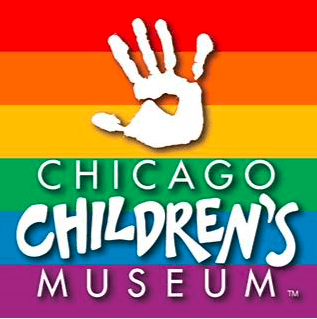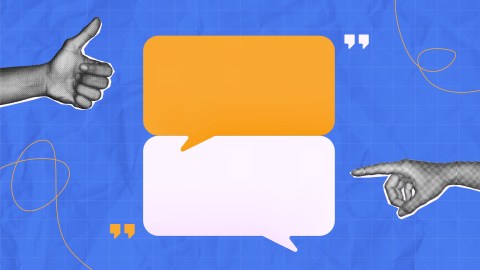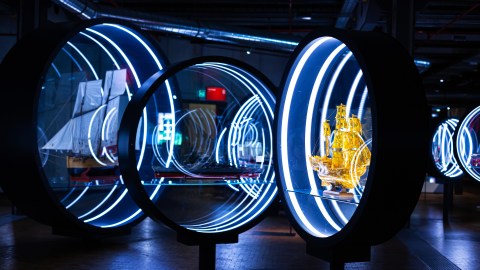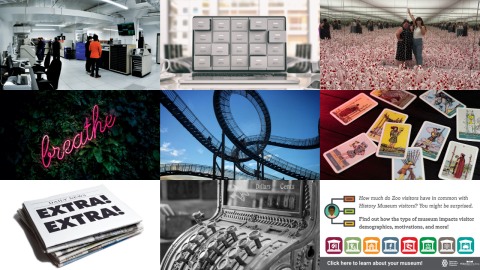This post originally appeared on the Center for the Future of Museums Future of Education blog in December 2016.
Have you ever been bothered by something, found co-workers who were bothered by the same thing, put your heads together, and made change happen? That’s pretty much how in 2010 we got Chicago Children’s Museum’s LGBTQ Inclusion initiative off the ground. A group of us—some LGBTQ, some not—shared a concern that children growing up with same-sex parents and/or children who expressed their gender in creative, non-traditional ways are invisible in society.
We did some reading, connected with national expert Aimee Gelnaw from the Human Rights Campaign and www.WelcomingSchools.com, consulted with LGBTQ individuals on staff and in our community, crafted a proposal and brought it back to our Management team. It was an easy sell. Our Diversity Positon Paper from 2009 already stated that “Chicago Children’s Museum seeks to nurture the development of every child’s fullest potential by actively addressing issues of diversity and equity,” and that diversity includes a recognition that “all individuals experience the world through various dimensions, such as gender…and sexual orientation.” In 2011, our interdepartmental group became an official committee focused on ensuring that LGBTQ families and communities are welcomed and supported in all aspects of CCM life.
Here’s what we’ve learned in six years:
1. Be resourceful; use existing skills.
I’m not LGBTQ but I chair the committee. Why? Because I plan and facilitate results-oriented meetings for a living. I’m also passionate about equality and equity, and I know not to do anything without input from the LGBTQ community. I’m also not afraid to make mistakes. Who can you recruit to lead your team?
2. Embrace the rainbow as a sign of welcome; it speaks volumes.
One of the first things we did in 2011 was place this sign at all museum entrances. It sends a message to visitors (and staff) that “All” means ALL. Here’s a note we received with a $25 donation: “I am writing to thank you for your open display of inclusiveness….In a world that does not always welcome non-traditional couples, it was wonderful to know that there are places where we are allowed and invited….Thank you for being something good in the world. –Mery and Rosa”
3. Get a new bathroom sign.
Having a place to pee is a must, not an option. You probably have a multi-purpose bathroom already. Replace the man/woman symbol with a toilet. Add the words “All-Gender” for extra assurance to those who are sometimes stared at (or worse) when using a gendered bathroom.
We started with a sign which we got for $27.00 at www.MyDoorSigns.com
Now we have this sign that matches our other bathroom signs.
4. Include images of LGBTQ people—beyond PRIDE month.
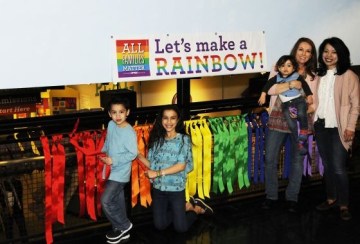
In the words of poet Adrienne Rich: When someone with the authority of a teacher, say, describes the world and you’re not in it, there’s a moment of psychic disequilibrium, as if you looked into a mirror and saw nothing.
Theresa Volpe (left), CCM’s LGBTQ Inclusion Advisor, allows us to use her family picture as needed. She values having a variety of family configurations represented in our materials. Check out this post I co-wrote with Theresa.
These sisters also gave CCM permission to use their photo so visitors can see gender expressed in at least two ways.
5. Avoid reinforcing the gender binary
(categorizing people as either male/female, man/ woman, boy/girl.)
- We changed our recorded announcement from “Attention boys, girls, moms, dads and caregivers” to “Attention visitors.”
- Rather than assume a visitor’s gender, we use inclusive language relevant to our setting: “Hello friends, are you ready to have fun today?”, “I think I see your grown-ups over there.”, “I see some brave explorers today!”
- We never divide groups of children by boys and girls (If there’s one thing you can start doing now—without asking anyone’s permission—it’s this!)
- We don’t ask visitors to check a male/female box on forms or surveys. IF we need to collect gender data, we prefer this: Gender:_____
6. Apply good customer service techniques to visitors who don’t like your rainbows.
Staff handle complaints about our rainbows the same way they handle complaints about our no coffeepolicy: 1) Calmly restate the museum’s policy, 2) Keep the conversation brief (without brushing off the guest), 3) Never engage in debate or add personal statements about the policy, and 4) Let visitors know that completing a comment card is a good way to ensure their voice will be heard.
NOTE: Chicago has diverse guests from hundreds of cultures, some of which are very conservative. We’ve definitely had more complaints about our no-coffee policy than our rainbows.
7. Don’t wait for everyone on staff (or the board) to agree.
We know not all staff feel exactly the same way at CCM. We do however, require that all staff are outwardly friendly with all guests and are able to restate the museum’s inclusion policy (and all policies) as needed. Personal opinions stay personal and don’t factor into the workplace.
8. Incorporate LGBTQ awareness into staff trainings.
We were able to get a few low-cost staff trainings from partners such as Illinois Safe Schools Alliance. We continue to offer brief refreshers every few months, especially for guest-facing staff.
9. Tap into existing resources.
- AAM’s new LGBTQ Inclusion Guidelines
- CCM’s LGBTQ Inclusion Resources
10. Go forward with calm and confidence.
If you’re still reading this post, maybe you’re the person to start or enhance an LGBTQ Inclusion effort at your museum. Let me know if you need support: KatieS@ChicagoChildrensMuseum.Org. As museum professionals, I believe it is our privilege and responsibility to embrace LGBTQ inclusion in all that we do.
“Negative peace is the absence of tension; positive peace is the presence of justice.”—Dr. Martin Luther King, Jr.
Katie Slivovsky is Exhibit Development Director at Chicago Children’s Museum where in 2011, she co-founded the museum’s LGBTQ Inclusion initiative which she now chairs. Katie has also worked at Brookfield Zoo, The Morton Arboretum, and the Children’s Museum of Indianapolis. You can reach her at: KatieS@chicagochildrensmuseum.org
